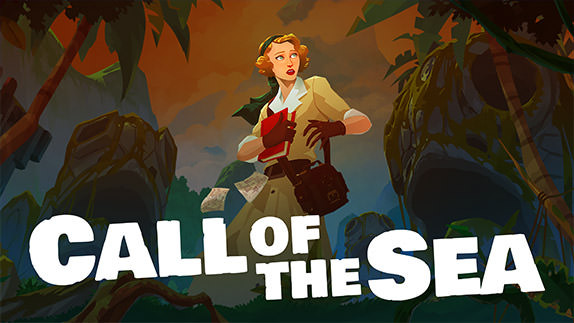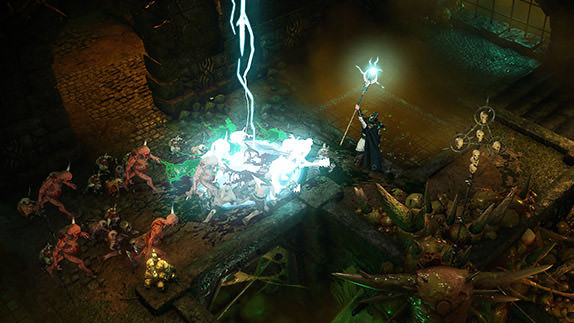NBA 2K Playgrounds 2 Review

 By Kevin Mitchell | October 28, 2018
By Kevin Mitchell | October 28, 2018
Arcade-style sports made a surprising return last year with the NBA Jam meets NBA Street-inspired title NBA Playgrounds, developed by Saber Interactive. From spectacular, flashy dunks and ankle-breaking unique crossovers to characterized representations of current NBA players and legends of yesterday, it brought the beloved arcade sport to the modern era. NBA 2K Playgrounds 2 expands upon the first game, improving the online offering, adding an abbreviated season mode, and featuring stylistic team arenas to go along with the city representations. The two-on-two gameplay doesn't let things such as out of bounds, rules, or even gravity confine you.
At launch, NBA Playgrounds was a bit of a shallow experience, although the gameplay loop was quite stable. It took a post-release patch to add a shot meter and even longer for being able to play against friends online. Regarding content, Playgrounds 2 has everything that you'd want or expect to find in the game. The new season mode lets you take an NBA team through a condensed 14-game season. You can select any two players from your chosen team, but if you don't have enough players unlocked for said team, you will be given two to choose from. If you make it to the playoffs (best of three rounds) and win a championship, you'll unlock an exclusive epic card from the team's history. It's not clear if the reward is limited to this specific mode or if it can be earned randomly via card packs. Just like all of the additional modes, you can play with an AI partner, a friend locally, or online.
NBA 2K Playgrounds 2 has kept the control mechanics as arcade-y as possible, keeping the game accessible to any demographic. Unlike the NBA 2K series that has been pushing for analog shooting using the right stick and a complicated control scheme for both offense and defense, Playgrounds 2 keeps things simple. Shooting and passing are attached to simple button presses, and crossovers can be performed by flicking the right stick. It has never been easier on defense, with a button tied to stealing, pushing, and blocking. Alley-oops, some of the flashiest maneuvers in the sport, are as simple as holding down another button before passing, making them quite easy to execute. If you need additional room to shoot, throw some elbows to knock down your competition and create space. I found success by stealing the basketball at the most opportune moments. You don't want to overuse it, as it burns through your stamina meter.
Instead of being "on fire," as was custom in NBA Jam, teams build their Lottery Picks meter, which offers a random unique power-up once filled. There are just under 10 in the game, some of which were included in the first game. These range from an unblockable supercharged ball that will score from anywhere on the right side of the court, double points for dunks/three-pointers, super speed, and more. Others can affect the opposing team, such as cursing them, lowering their stats to minimal levels, or protecting your hoop by coating it with ice that'll take multiple shots to break. As it was in the original game, playing against the AI, the so-called random assigned nature of these lottery picks seems unfair. More often than not, I would earn the weakest of the power-ups (super speed), at least in my mind, while the AI-controlled team would get double points shots or the bonus point star locations.
All player cards begin their life at the lowest tier, bronze, but can be improved to diamond tier. By using the player, you can earn experience to increase the value of the cards, raising the stats of the respective player; however, you need to complete challenges to reach the diamond tier. Like last year, you earn Baller Bucks to purchase additional card packs, which earn you random players. If you already have the player, you'll earn experience for said player instead. New this year is a second currency, Golden Bucks, which is slowly earned in-game but can be purchased via real-life money. You can unlock the entire current roster and future players that will be continually added to the game, but only through Golden Bucks. You can also use the currency to purchase individual cosmetics packs to outfit any of your players. There shouldn't be a surprise that microtransactions have been added to the game, considering it is now part of the 2K lineup.
Outside of the season and exhibition game modes, NBA 2K Playgrounds 2 does feature online modes, letting you play cooperatively with friends (locally or online), or competitively against friends or random players through matchmaking. Playgrounds Championship serves as a ranked online experience, in either a cooperative or competitive setting. The aforementioned season mode can be played with an online friend, similar to exhibition matches, but there is one final game mode: three-point contest. Just like the rest of the offerings, it can be played against friends, random online players, or the AI. However, the gameplay mechanic differs from the standard shooting in the game, which begs the question: why? Why did they opt to use a unique metronome-style timing mini-game for this game mode, instead of the hold and release shooting mechanic used in everything else? Even so, if you time your shots correctly, you aren't rewarded with making the shot, as everything is based on percentages.
Simply Put
NBA 2K Playgrounds 2 feels like an evolution from the first game, providing a smoother gameplay experience and a deeper online offering. Anyone can jump into the game and perform a self alley-oop double front flip dunk with ease. It's as accessible as you would expect and demand of a traditional arcade game. However, the inclusion of microtransactions is disheartening. Sure, you can only purchase cosmetic packs, not actual player cards, but you can negate the entire grind in the game by unlocking all players for a price. The Xbox One version of the game occasionally hangs at least once a day, forcing a restart.
Note: NBA 2K Playgrounds 2 was reviewed on Xbox One. A digital copy of the game was provided by the publisher/developer.




